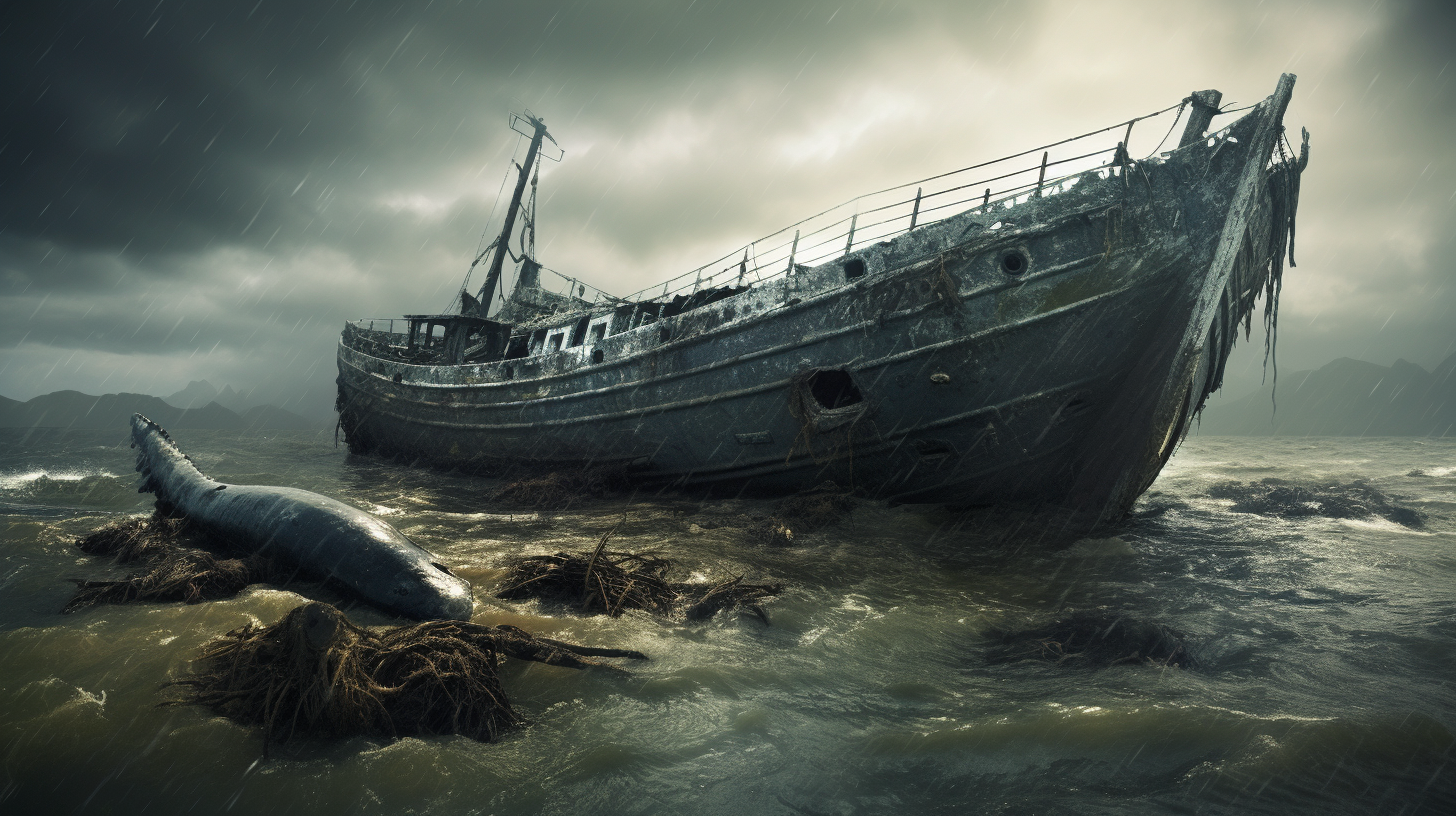In a world where the cacophony of human progress drowns out nature’s orchestra, the once-vibrant ballads of the deep now falter and fade. Our tale is one of mournful melody, a whalesong, echoing in the hollow vastness of a noise-polluted ocean, now turned graveyard. A testament to the creatures that carved life from the abyss, now etching their magnum opus into the silence of extinction.
The discordant symphony of underwater noise pollution has long been documented as a harbinger of doom for many marine species. Prospects of adaptation dwindle as each sonar ping and propeller groan fractures the fabric of marine life communication – an essential thread in the tapestry of underwater existence. Whales, those gentle giants once revered as sovereigns of the sea, now find their calls lost amidst the relentless hum of humanity’s marine march.
Recent expeditions document the desperate search for connection amongst these behemoths. They sing louder, dive deeper, and wander farther than ever before, searching for kin in an ocean that has become an alien landscape. Across desolate watery expanses, where coral graveyards lay silent beneath the waves, the infrequent and haunting responses paint a chilling portrait of solitude in the sea.
Researchers have noted a marked change in both the frequency and duration of cetacean songs – a barometer of the oceans’ health. The melodies once spanned oceans, unimpeded by the barriers of human interference. Now, they stutter and stop, an epitaph to the rich biodiversity we have heedlessly jettisoned. The whales’ plight silently tolls a bell, not just for the death of individual species, but for the disintegration of ecosystems worldwide.
Amidst this sonic chaos, a peculiar narrative unfolds. Recounted through the forlorn cries of the last leviathans, a story of ecological downfall emerges. Those cries are not just calls flung into the abyss but an indictment of human complacency in a changing world. The unnerving truth is that these calls go unanswered, and the seas’ mighty composers become orators of their own obituaries.
The irony in our imperative to listen becomes startlingly clear as we stand on precipices overlooking oceans once teeming with life. As the whale songs fade, we are called upon to hearken to what is left – the subtlety of echolocation clicks, the diminishing riffs of a lonesome humpback. These sounds are archives, preserving the memory of what once was and could never be again in an ocean turned sepulcher.
There remains, however, in the face of insurmountable odds, the indomitable spirit of scientific inquiry. Devices designed to quell the noise pollution are in experimental stages, while protected marine sanctuaries strive to provide some respite for the beleaguered inhabitants. In these lesser-touched aquatic realms, we witness a poignant resistance, a defiance against the tides of an aquatic apocalypse.
Environmental prognosticators plead, invoking the siren call of these marine giants, beseeching humanity to reflect. Can we heed the whales’ fading requiem as a catalyst for unparalleled environmental stewardship? Or do we doom ourselves to chronicling only the last whispers of a drowning world?
In a harrowing union of art and science, activists and artists alike have taken to amplifying these somber serenades, not as background music to the narrative of progress but as a haunting centerpiece, a centerpiece that commands attention and builds an emotional bridge to the elusive, waning wilderness beneath the waves.
In this lies our challenge – to plunge into that silence, explore that burgeoning void, and emerge transformed. To take these dissolving echoes, this ‘whalesong in silence’, and not let them be an epilogue to an aquatic era but a prelude to an awakening.
